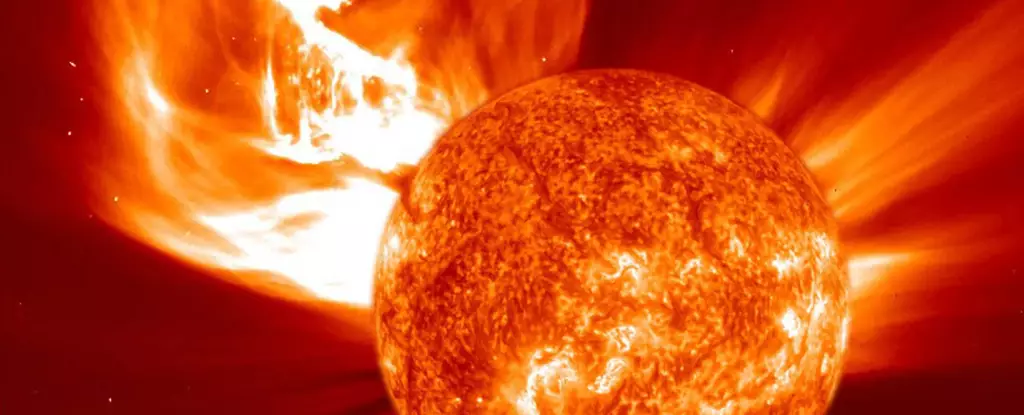Recently, the demise of three minuscule satellites from Curtin University’s Binar Space Program has sparked discussions about satellite operations and space weather. These satellites, labeled Binar-2, Binar-3, and Binar-4, were intended to explore the intricacies of space and conduct scientific experiments. Unfortunately, they succumbed to the flames of Earth’s atmosphere after only two months in orbit, dramatically shorter than the anticipated six-month mission. This incident underscores a significant issue with low Earth orbit satellites—they are incredibly vulnerable to fluctuations in solar activity.
The Influence of Solar Activity
Solar phenomena such as sunspots, flares, and solar wind are responsible for a complicated interaction with Earth’s atmosphere that poses risks to satellite functionality. During periods of heightened solar activity, the Sun’s magnetic field intensifies, leading to increased emissions of charged particles towards Earth. These phenomena are not only sporadic; they follow an eleven-year cycle, known as the solar cycle, where we observe variations in solar intensity. Currently, we are experiencing the impact of solar cycle 25, which has already revealed unexpectedly high levels of solar activity.
This elevated activity has significant implications for satellites, particularly those in low Earth orbit. The tumultuous environment created by solar flares and strong solar winds leads to the influx of charged particles that can heavily damage satellite equipment and disrupt operations. Perhaps more detrimental, however, is how this solar energy affects the Earth’s atmosphere itself, leading to a ballooning effect that increases atmospheric drag on satellites orbiting below 1,000 kilometers.
For the Binar satellites, the most pressing issue was the increased atmospheric drag resulting from solar activity. With insufficient altitude adjustment capabilities—typical for CubeSats—they fell victim to this force, leading to their premature re-entry and destruction. It’s worth noting that larger satellites like the International Space Station or the extensive Starlink constellation possess thrusters that allow for altitude corrections, but these adjustments are costly and can become burdensome for operators under constant solar disturbances.
Sadly, the fate of the Binar satellites illustrates a broader trend affecting many smaller research and educational satellites orbiting Earth. These CubeSats are designed to be cost-effective, making them invaluable tools for universities and smaller organizations looking to engage in space exploration. However, the high risk of operational failure due to erratic solar behavior presents a significant barrier for these missions.
Curtin University’s Binar Space Program aims to lower the barriers for space exploration and enhance our understanding of the solar system. The program commenced with Binar-1 in 2021, successfully orbiting for nearly a year in a lower activity solar cycle. The lessons learned from this mission fueled excitement for subsequent launches, including Binar-2, 3, and 4. With enhanced technology, these satellites were poised to last longer. However, the unmatched solar activity that occurred turned hopes into disappointment.
Despite their ambitious goals, the reality of satellite operations exposes a critical need: improved forecasting of space weather. Companies and academic institutions alike rely on accurate predictions to mitigate risks to their investments. The premature loss of the Binar satellites serves as a stark reminder of the unpredictability and influence of solar dynamics on satellites’ viability.
Looking Ahead to Future Missions
While the early demise of Binar-2, 3, and 4 is undeniably unfortunate, it brings attention to the need for more robust methodologies for understanding and anticipating space weather. The Silver Lining? Upcoming solar activity is expected to diminish by 2026, reaching a solar minimum by 2030. This period of reduced solar output should create more favorable conditions for satellite operations, allowing future missions from the Binar Space Program and beyond to thrive without the immediate threat of destructive solar forces.
As we consider the Binar satellites’ untimely end, it also propels a conversation surrounding the urgent necessity for technological advancements in both satellite design and space weather forecasting. By learning from these early failures, researchers and industry professionals can harness their knowledge and work towards developing strategies that can safeguard future missions from the whims of the Sun, ensuring that the final frontier remains accessible, safe, and ready for exploration.

